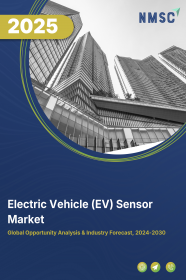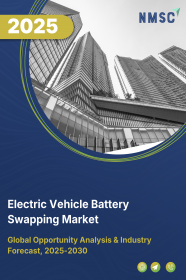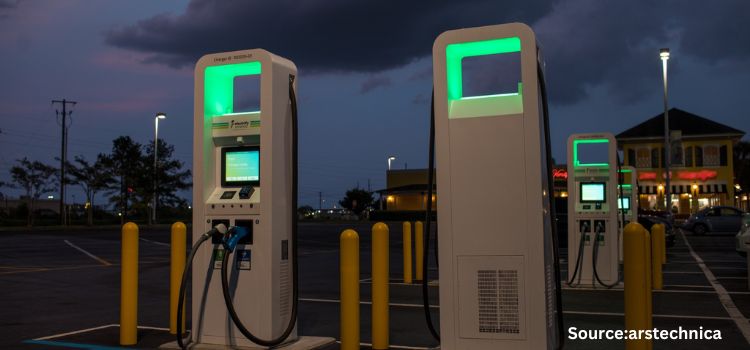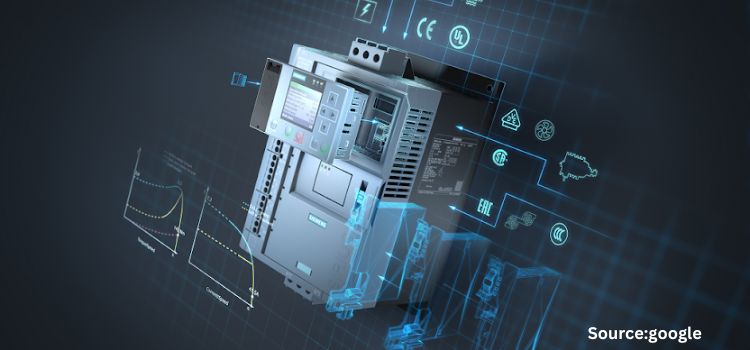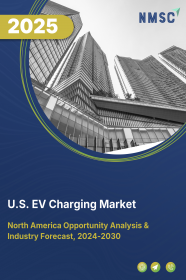
U.S. Electric Vehicle (EV) Charging Market by Charging Type (Off-Board Top-Down Pantograph, On-Board Bottom-Up Pantograph, and Charging Via Connector), Charging Voltage Level (Level 1 (<3.7 KW), Level 2 (3.7–22 KW), and Level 3 (Above 22 KW)), Charger Type (Slow Charger and Fast Charger), Vehicle Charging (AC, DC, Inductive Charging) – Opportunity Analysis and Industry Forecast 2023–2030
Industry: Automotive & Transportation | Publish Date: 04-Mar-2025 | No of Pages: 90 | No. of Tables: 72 | No. of Figures: 41 | Format: PDF | Report Code : AT844
US Tariff Impact on U.S. EV Charging Market
Trump Tariffs Are Reshaping Global Business
Market Overview
U.S. Electric Vehicle (EV) Charging Market was valued at USD 941.29 million in 2022, and is predicted to reach USD 8851.3 million by 2030, with a CAGR of 32.9% from 2023 to 2030. Electric vehicle chargers are characterized by the rate at which they supply energy to a plug-in electric vehicle's battery. They serve as essential infrastructure, facilitating the connection between the electric vehicle and an electrical outlet for the purpose of recharging the vehicle's battery. These chargers play a pivotal role in delivering the necessary electrical energy to charge the batteries of electric vehicles.
Charging stations offer the capability to charge electric vehicles, neighborhood EVs, and plug-in hybrids by linking them to an electrical source. Additionally, certain charging stations come equipped with advanced functionalities such as smart meters, cellular connectivity, and network access. Charging electric vehicles can be accomplished through various charging levels, including Level 1, Level 2, and Level 3. The higher the charging level, the quicker the charging process, resulting in a higher power delivery to the vehicle. Electric vehicles play a pivotal role in substantially reducing the release of toxic gases into the atmosphere, consequently mitigating carbon footprints. The increasing concern surrounding carbon emissions and harmful gases originating from transportation has underscored the critical need for the widespread adoption of electric vehicles.
In addition, the penetration of EV charging is high in commercial spaces as compared to residential ones. Long-distance trips would benefit from ultra-fast charging capabilities made possible by public charging infrastructure.
However, EV chargers for residential spaces offer significant growth potential as they are affordable and more convenient for charging electric vehicles as compared to commercial charging stations.
United States Takes Bold Steps to Curb Emissions and Promote Electric Vehicles
Through the implementation of regulatory laws and regional initiatives, the United States is taking aggressive emission reduction steps to lower atmospheric CO2 concentrations. Respiratory illnesses have been brought on by poor air quality in several major cities, including New York City, Los Angeles, and Houston, among others. Such circumstances make it challenging to survive in the current climate.
In order to reduce air pollution levels, the EPA approved new regulations (the National Emissions Ceilings (NEC) Directive) for its member states in 2016. The necessity for an environmentally benign and low-residue method of transportation is being driven by all of these concerns taken together.
Consequently, encouraging the use of electric vehicles and the growing demand for infrastructure to facilitate electric vehicle charging. There is a growing market for electric vehicles thanks to the large selection of EVs offered by numerous Original Equipment Manufacturers (OEMs), such as Tesla, Ford, and General Motors. For instance, in June 2021, General Motors stated that it would spend USD 35 billion on developing and expanding its electric vehicle (EV) production capacity to more than one million units by 2025.
Developing new solutions that give clients better-charging infrastructures is a major emphasis for many EV charging station providers. For instance, in September 2021, SemaConnect Inc. announced the launch of its new Series 8 retail EV charging station. This SemaConnect Series 8 level 2 charging station has an intuitive network platform, interactive LED lights, and a sleek design.
Market Leaders' Technological Advancements Propel Growth in the EV Charging Market
The presence of prominent players such as Tesla, ABB, and ChargePoint, Inc. among others that indulge in technological advancement and innovative products in EV charging market further boosts the market growth. For instance, in November 2021, Tesla launched its new version of Gen 2 wall connector with J1772 connector. This EV charging station, in contrast to its earlier models, is appropriate for all EV models offered on the North American market.
Also, in October 2021, ABB and Amazon AWS launched a fleet management tool for public EV chargers. The cloud-based service called Panion EV charge planning will assist operators manage power in a more efficient way.
Fast Chargers' High Initial Setup Costs Hinder The EV Charging Market Growth
Lack of incentives and worries about the high installation costs of EV charger installation could prevent the growth of the sector. One of the biggest barriers to the expansion of this business is the high initial cost of level 3 and ultra-fast chargers. While level 1 and level 2 chargers can take anything from 6 to 16 hours to fully charge, consumers typically charge their fossil fuel vehicles in 5 to 7 minutes.
Fast chargers that can charge EVs in under 30 minutes are therefore in demand on the market. A level 3 charging station can be somewhat expensive at first, though. For those who might want to transition to EVs, this could be a deterrent because a lengthy charging period might interfere with their already hectic schedules.
Surging Adoption of Vehicle-to-Grid (V2G) EV Charging Stations in U.S. Unlocks Promising Opportunities
A technology called vehicle-to-grid (V2G) EV charging allows plug-in EVs and the power grid to exchange electrical energy in both directions. Electric vehicles (EVs) can store extra electricity and release it to the grid thanks to V2G technology. This may enhance the functionality of the electrical component and increase value for EV owners.
The development of this concept has made charging for electric vehicles easier, and EVs are now among people's top transportation options. As a result, the entire market for charging stations is essential for connecting the electric vehicle to the grid and enabling the vehicle to charge.
Two V2G EV vehicle charging stations were erected by Enel Energia S.p.A. at the Italian Institute of Technology's Genoa headquarters. The installation is a part of MOV-E, a Nissan-sponsored corporate electric car sharing trial project. The Italian Institute of Technology received two battery electric vehicles (LEAF models) from Nissan as well as the Glide app management platform. The partnership between Enel and Nissan represents a shift in the way that technology is used for sustainable transportation.
As a result, manufacturers have a great chance with the V2G charging technology because it is predicted to change the EV industry and determine how EVs will be charged in the future. Although V2G infrastructure is more beneficial than smart charging, installing V2G charging stations has a hefty up-front cost. Manufacturers of EV connectors are projected to have opportunities to produce sophisticated connectors to withstand electrical architecture due to the predictable and anticipated expansion of V2G technology.
Competitive Landscape
The U.S. Electric Vehicle (EV) Charging industry includes several market players such as ABB Ltd., ChargePoint, Inc, Tesla Inc, Shell Recharge Solutions, Star Charge, TELD, Siemens, BYD, EVgo, and Hyundai Motor Company.
Key Benefits
-
The U.S. Electric Vehicle (EV) Charging market report provides a quantitative analysis of the current market and estimations through 2023-2030 that assists in identifying the prevailing market opportunities to capitalize on.
-
The study comprises a deep dive analysis of the market trend including the current and future trends for depicting the prevalent investment pockets in the market.
-
The information related to key drivers, restraints, and opportunities and their impact on the market is provided in the report.
-
The competitive analysis of the market players along with their market share in the U.S. Electric Vehicle (EV) Charging market.
-
The SWOT analysis and Porter’s Five Forces model are elaborated in the study.
-
Value chain analysis in the market study provides a clear picture of the stakeholders’ roles.
U.S. Electric Vehicle (EV) Charging Market Key Segments
By Charging Type
-
Off-Board Top-Down Pantograph
-
On-Board Bottom-Up Pantograph
-
Charging Via Connector
By Charging Voltage Level
-
Level 1 (<3.7 KW)
-
Level 2 (3.7–22 KW)
-
Level 3 (Above 22 KW)
By Charger Type
-
Slow Charger
-
Fast Charger
By IOT Connectivity
-
Non-Connected Charging Stations
-
Smart Connected Charging Stations (Networked)
By Vehicle Charging
-
AC (Normal Charging)
-
DC (Super Charging)
-
Inductive Charging
By Application
-
Commercial
-
Residential
By Commercial
-
Commercial Public EV Charging Stations
-
On-Road Charging
-
Parking Spaces
-
Destination Chargers
-
-
Commercial Private EV Charging Stations
-
Fleet Charging
-
Captive Charging
-
By Installation Type
-
Portable Charging
-
Fixed Charging
-
Wall Mount
-
Pedestal Mount
-
Ceiling Mount
-
By Charging Standard
-
CCS
-
CHADEMO & GB/T
-
Type 1/Normal Charging
-
Tesla Super Charger
-
Type-2
-
Level 3
Key Players
-
ABB Ltd.
-
ChargePoint, Inc
-
Tesla Inc
-
Shell Recharge Solutions
-
Star Charge
-
TELD
-
Siemens
-
BYD
-
EVgo
-
Hyundai Motor Company
REPORT SCOPE AND SEGMENTATION:
|
Parameters |
Details |
|
Market Size in 2022 |
USD 941.29 Million |
|
Market Volume in 2022 |
87 Thousand Units |
|
Revenue Forecast in 2030 |
USD 8851.3 Million |
|
Growth Rate |
CAGR of 32.9% from 2023 to 2030 |
|
Analysis Period |
2022–2030 |
|
Base Year Considered |
2022 |
|
Forecast Period |
2023–2030 |
|
Market Size Estimation |
Million (USD) |
|
Growth Factors |
Increased regulatory laws and regional initiatives The presence of prominent players |
|
Companies Profiled |
10 |
|
Market Share |
Available for 10 companies |
|
Customization Scope |
Free customization (equivalent up to 80 working hours of analysts) after purchase. Addition or alteration to country, regional, and segment scope. |
|
Pricing and Purchase Options |
Avail customized purchase options to meet your exact research needs. |

















 Speak to Our Analyst
Speak to Our Analyst



